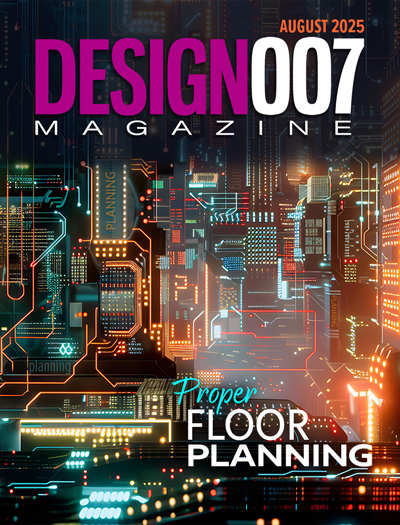-

- News
- Books
Featured Books
- design007 Magazine
Latest Issues
Current Issue
Power Integrity
Current power demands are increasing, especially with AI, 5G, and EV chips. This month, our experts share “watt’s up” with power integrity, from planning and layout through measurement and manufacturing.

Signal Integrity
If you don’t have signal integrity problems now, you will eventually. This month, our expert contributors share a variety of SI techniques that can help designers avoid ground bounce, crosstalk, parasitic issues, and much more.

Proper Floor Planning
Floor planning decisions can make or break performance, manufacturability, and timelines. This month’s contributors weigh in with their best practices for proper floor planning and specific strategies to get it right.
- Articles
- Columns
- Links
- Media kit
||| MENU - design007 Magazine
Estimated reading time: 2 minutes
Flexible Thinking: Making Flexible Circuits Stretchable
Flexible circuits have seen increased application and use since their introduction several decades ago. They are replacing or augmenting rigid circuit technology in a wide range of product markets from simple consumer items to incredibly complex military and aerospace applications. The limitations of the technology are truly boundless as it makes an appearance in the never-ending parade of new and improved electronic products.
While flexible circuits continue their forward march, over the past decade, there has been increased interest and use of stretchable circuits for a variety of new applications where circuits have the ability to deform and/or elongate elastically and return to their original size. This upstart variation of the venerable flexible circuit has been given the title of “stretchable circuit,” and it appears that they are going to be an increasingly important subset of future flexible circuit designs.
It is my opinion that the initial driving impetus for the development of stretchable circuits was a bit different than normal, meaning that military and aerospace have traditionally driven the development of arcane electronic interconnection technologies as they did with the development of both flexible and rigid-flex circuits. In contrast, it was a consumer-driven market that appears to have been the gate opener in the form of wearable electronics. The roll-out products that drove imaginations were fanciful and eye-catching, led but fashion ware with LED lighting as an integral element of their construction. The European Union took point in helping to grow the early market by making a substantial investment of euros to fund research and jump-start the technology. They also sponsored a series of bi-annual conferences over six years (I had the honor and privilege of delivering one of the keynotes at the inaugural 2007 conference held in Leuven, Belgium, at the IMEC Research Center). The key challenge was and has always been not so much one of metallizing an elastic substrate but in making metal circuits that could be stretched.
Flexible circuits have arguably been stretched for a few decades when they have been folded in an accordion fashion to allow for servicing electronic systems contained in drawers as they are opened and closed while maintaining a connection. This method was one of the approaches used for the metal circuits but where the circuit elements are created with “humps” on stretchable materials. Thus, when the material is stretched, the circuit humps are flattened. Fundamentally the same principle as used in the original but on a much smaller scale. However, many applications were thinking more along the lines of a traditional planar construction.
To read this entire column, which appeared in the July 2019 issue of Design007 Magazine, click here.
More Columns from Flexible Thinking
Flexible Thinking: The Key to a Successful Flex Circuit Design TransferFlexible Thinking: Flexible Circuit Technology—Looking Back and Forward
Flexible Thinking: Mind-tapping into January
Flexible Thinking: Another PCB Design Paradigm Shift in the Works
Flexible Thinking: Rules of Thumb—A Word to the Wise
Flexible Thinking: Musings on High Density Interconnections
Flexible Thinking: Integrated Passive Devices—Design Solutions With Many Benefits
Flexible Thinking: Mechatronics in a Flex World


